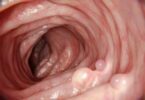Galactorrhea is called the secretion of milk from the mammary gland outside the puerperal period – the puerperium is the period of time that elapses from the end of childbirth until 6-8 weeks postpartum and that persists for more than 6 months.
It can be spontaneous or appear only after expression maneuvers. However, in women who have had several children there may be a minimal secretion after the expression of the breast, without this implying the presence of disease.
It mainly affects women, especially those between the ages of 20 and 35 who have had previous pregnancies.
This disease can also appear at other ages, in children and in men.
Galactorrhea is due to a deregulation of the secretion of these hormones, mainly prolactin, which is not the same as saying that prolactin secretion is elevated in all cases of galactorrhea. For its part, the increase in prolactin does not always cause galactorrhea. Taking drugs is the most common cause of elevated prolactin levels in the blood. In some patients it is recommended to avoid the use of clothing that excessively stimulates or irritates the nipple, since repeated mechanical stimulation of the nipple causes galactorrhea.
The most common causes of galactorrhea are:
- Prolactin-producing pituitary tumors (called prolactinomas).
- Endocrine diseases: due to hormonal changes.
- Stress of any kind, both physical and psychological, can cause an increase in prolactin levels in the blood.
- Chronic kidney disease: although up to 50% have high prolactin levels, the appearance of galactorrhea is rare.
- Hepatic cirrhosis.
- Local infections (mastitis or inflammation of the breast, herpes zoster or shingles).
- Hypothalamic processes: The hypothalamus is a region of the brain that, among many other things, regulates the release of hormones from the pituitary gland.









